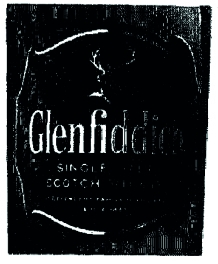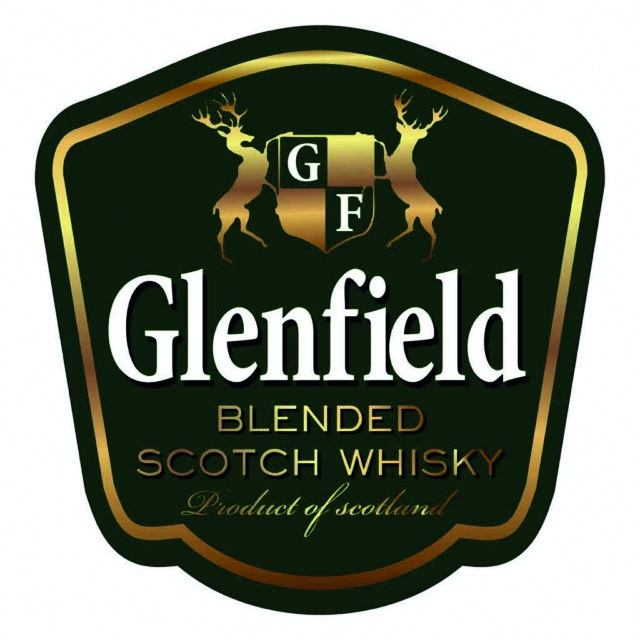Glenfiddich on the rocks
In a recent trade mark opposition, William Grant & Sons Ltd, the biggest independent whisky company in Scotland and owner of the famous GLENFIDDICH brand of Scotch Whisky, has failed to stop an application for a green and gold label mark containing the word GLENFIELD in white lettering. This unexpected result shows the limits of a word mark and provides warning to owners of famous brands that name and reputation alone are not always enough to win an opposition.
Background
William Grant & Sons Ltd (William Grant) is the owner of the well-known earlier word mark GLENFIDDICH, registered in 1960 in respect of Scotch Whisky. William Grant also uses, and claims to have substantial goodwill in, its label (which was presented to the hearing officer in the poor quality black and white representation shown below).

In January 2018, Vivek Anasane, a Mumbai-based businessman, filed an application for a label mark in class 33 (Scotch Whisky) comprising the sign GLENFIELD together with stags aside a shield on a green and gold background (the application), shown below.

William Grant opposed the application on the grounds of sections 5(2)(b), 5(3) and 5(4)(a) of the Trade Marks Act 1994.
Opposition under 5(2)(b)
In comparison to William Grant’s mark, which consists only of the word GLENFIDDICH, the hearing officer considered the application to be suitably more complex. The word GLENFIELD is emboldened in white letters against a dark green background, together with other less dominant words (“Blended Scotch Whisky” and “Product of Scotland”) and stags rampant on either side of a shield, each element contributing to the distinctive character of the device overall.
William Grant argued that both marks shared visual similarity as FIELD and FIDDICH both contain the letters “F” and “D”, but the hearing officer disagreed. He recognised that the letters appeared in both, but concluded that this had little impact on the assessment, in particular because the word GLENFIDDICH is noticeably longer than GLENFIELD. Taking into account all the additional elements of the application, the hearing officer concluded a very low level of visual similarity.
Aurally, GLENFIELD was held to be the only aspect of the application relevant to the pronunciation. Although both shared the first syllable GLEN together with the “F” sound at the start of the second syllable, the hearing officer concluded that they shared a low to medium level of aural similarity, as GLENFIDDICH had three syllables, with the last two being different to GLENFIELD.
The conceptual similarity of the marks was also considered to be a very low level. Other than the common occurrence of GLEN (meaning “a narrow valley, especially in Scotland or Ireland”), the multiple additional elements of the application (such as the stags) impacted on its overall “conceptual identity”, none of which were found in the earlier mark.
In William Grant’s favour, the hearing officer decided that GLENFIDDICH benefits from a high level of distinctive character as a result of long-standing and extensive use.
The hearing officer acknowledged that there were elements of this opposition that typically would point towards a finding of likelihood of confusion (that is, identical goods, high-level of distinctive character), but he was satisfied that there would be no confusion due to the multiple differences between the marks. GLEN, being the only common element, would be readily understood by the average consumer to be an allusion to Scotland. Furthermore, the second element of the earlier mark FIDDICH has no conceptual meaning whereas FIELD does, and would not be mistaken by the average consumer. In his assessment, “[the application] will not even bring [GLENFIDDICH] to mind let alone confuse the consumer into believing that the goods sold under the respective marks originate from the same or linked undertaking”.
Opposition under 5(3)
After a brief restatement of the law, the hearing officer came to the conclusion that there was no link between the undertakings or risk to the distinctive character or reputation of the opponent’s mark.
Referring to earlier parts of the decision, the hearing officer was satisfied that William Grant had provided sufficient evidence of use of its mark in the UK and enjoyed a significant amount of reputation in respect to whisky products. With only a low degree of similarity of the marks, he concluded it was unlikely that the average consumer would bring the GLENFIDDICH mark to mind. Therefore, the application was unlikely to cause confusion or make the average consumer believe that the goods would originate from the same or linked undertaking. It followed that GLENFIELD would not take unfair advantage or cause detriment to the earlier mark.
Opposition under 5(4)(a)
Having decided earlier that GLENFIDDICH (word) enjoys a significant reputation in the UK, the hearing officer concluded that William Grant had considerable goodwill identified by the word mark.
Hedging their bets, however, William Grant also relied on its label to show goodwill, stating that it “uses the colour combination green and gold, [and] features an image of a stag device which has become highly recognisable to consumers”. Confusingly, William Grant put into evidence only black and white representations of the label, many of which were of poor quality. Further, the evidence showed that there was not just one label, but several: some with different words, some which were light-coloured or clear, and some that did not feature the word GLENFIDDICH prominently or at all. Despite this, the hearing officer accepted that the main label relied upon generally has the colour combination of GLENFIDDICH in white, other labelling in gold, and the background in dark green. He decided that the label had significant goodwill, although less than the word mark due to the other various labels in use.
Acknowledging that the test for misrepresentation is different than tests for confusion, similarity or causal link under 5(2)(b) and 5(3), the hearing officer was prepared to follow his reasoning under those grounds, and found there was no misrepresentation as towards the word mark.
Upon conducting an assessment of the application as against the GLENFIDDICH label, the hearing officer concluded that there were some similarities, including the dominant elements of the marks (that is, GLEN, F, I and D) and colour combinations. This was not, however, enough to convince him to find misrepresentation. Overall the differences, such as the number of stags, and low degree of visual, aural and conceptual similarity, outweighed the similar elements.
In short
This decision is an example of the limits of a word mark in opposition proceedings against a label which may have its own distinctive elements. William Grant’s opposition failed on all grounds, despite the Hearing Officer finding that the GLENFIDDICH registered mark and unregistered label had a high degree of distinctive character, enjoyed significant reputation and shared some similarity with the GLENFIELD application.
It is difficult to say whether the result would have been different had William Grant asserted a registered, full-colour label mark, but the decision serves as a reminder that brand-owners should review their trade mark portfolio regularly and fill in any gaps in protection where they appear, in particular if reliant on a particular colour scheme or get-up.
Case details at a glance
Jurisdiction: England & Wales
Decision level: UKIPO
Parties: Vivek Anasane (applicant) and William Grant & Sons Limited (opponent)
Date: 08 April 2019
BL Number: O/183/19
